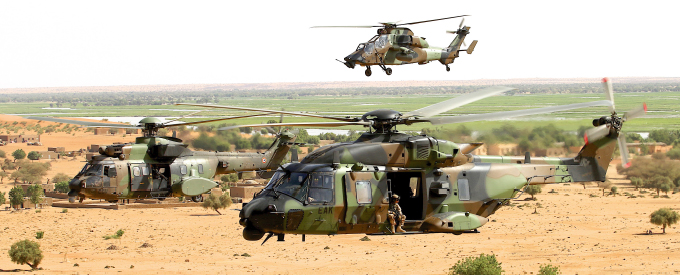The future of military rotorcraft is being shaped by a number of factors, including the changing nature of warfare, the need for increased performance, and the demand for greater safety and survivability.
Matthieu Louvot, Executive Vice President of Airbus Helicopters Programmes, noted that Airbus Helicopters is currently in a “major cycle of military innovation” and shared insights into the company’s preparations for the next generation of military rotorcraft.
Designing such helicopters is a long-term project, and Airbus Helicopters, according to him, is working on incorporating features that will have a decisive operational impact on the battlefield.
In the 1990s and 2000s, Airbus Helicopters created the Tiger and the NH90 helicopters, followed by a focus on civil developments during the 2010s. However, in the 2020s and 2030s, the company is back on a major military innovation cycle with the launch of two major programmes, namely the Tiger MkIII and the HIL (H160M), along with the continued development of the H145M.
Additionally, Airbus Helicopters has self-funded the launch of the H175M and the VSR700. Louvot emphasised that this signifies a significant cycle of military innovation for the company.
Biggest Challenge
The biggest challenge, according to him, is to carry out the two very large programmes which will keep the company busy throughout the 20s and to continue into the 30s, with the new wave of innovation that it is preparing for with European Next Generation Rotorcraft Technologies (ENGRT) and the support of National R&T from France, Germany and Spain.
This, he pointed out, would be the helicopter of the future, with more advanced technological bricks on subjects such as coupling with drones.
On about the potential obsolescence of helicopters due to the conflict in Ukraine, Louvot emphasised that combat helicopters and transport helicopters remain essential in modern conflicts.
This applies to both asymmetric and symmetric conflicts, such as the ongoing war in Ukraine. While symmetrical conflicts require greater protection and operational precautions, Airbus Helicopters designs their helicopters precisely to meet these requirements.
Louvot acknowledged that the conflict in Ukraine raised questions due to the destruction of helicopters at the conflict’s onset. He attributed this vulnerability to a specific way of using helicopters that made them susceptible to damage.
However, he highlighted that modern helicopters, particularly the NH90 and the Tiger, possess sophisticated avionics that allow them to fly at low altitudes, during nighttime, and in adverse conditions.
The NH90, for example, is equipped with electronic flight controls, providing unparalleled tactical flight flexibility. These helicopters feature advanced self-defence systems to protect against threats such as infrared-guided missiles. They also incorporate armour and systems that enhance resistance to various forms of attack, making them difficult to detect and target.
Core Missions
Louvot emphasised that helicopters remain essential for numerous missions due to their flexibility, ability to operate in diverse locations, and their capability to coordinate closely with ground troops, offering a clear view of the operating terrain.
He outlined various core missions that are still relevant, including rescue missions, troop and equipment transport, deep cover and close combat missions, reconnaissance, and armed reconnaissance missions.
He stressed that advancements in technology enable more extensive data exchange, addressing the requirements of sophisticated operations.
Regarding Airbus’s process of identifying and creating impactful technologies for the future, Louvot explained that there were two approaches.
The first approach is driven by technology, where Airbus identifies technologies that can enhance helicopter performance and brings them to maturity. This approach is reflected in their demonstrators, such as the RACER (Rapid and Cost Effective Rotorcraft), which explores the potential benefits of high-speed capabilities.
The second approach involves responding to the needs of the military user. Airbus examines new operational mission scenarios and matches them with available or emerging technologies to fund the maturation of key technologies. Collaboration with countries where Airbus is established, such as France, Germany, and Spain, is crucial for addressing scale and convergence of needs.
By embracing the integration of drones and harnessing their expertise, Airbus Helicopters seems poised to shape the future of military rotorcraft and enhance their operational effectiveness on the battlefield .
* Full article originally published in the June 2023 edition of Rotor Magazine by Airbus Helicopters.


No Comments